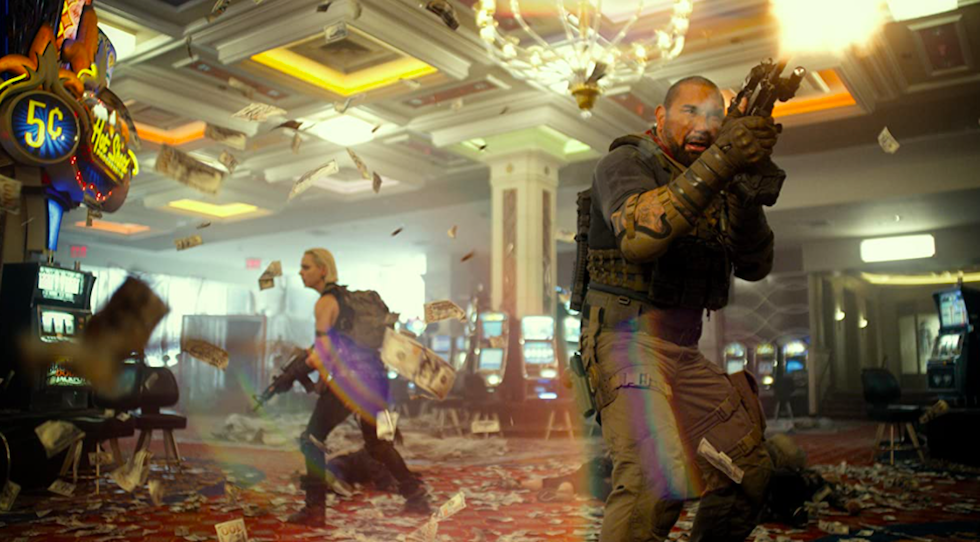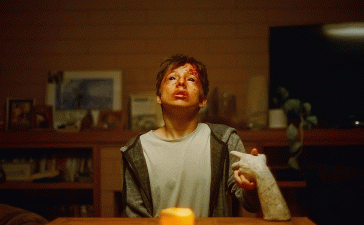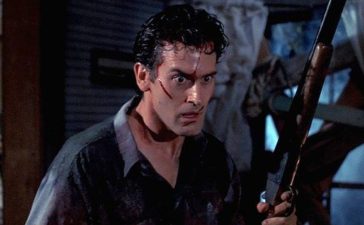Currently streaming on Netflix, Zack Snyder’s zombie heist movie Army of the Dead offers some newish wrinkles on the old walking dead trope. Our critic Travis Johnson takes a look at how movie zombies have changed over the years.
If you’ve seen Army of the Dead – and if you haven’t, spoilers coming up in this very sentence, so be advised – you know that one of the more interesting variants on modern zombie lore is the inclusion of what they call “Alphas” – zombies that have some semblance of intelligence above what we consider normal for the recently and not-so-recently deceased.
For sure, there are plenty of rank and file flesh-eaters for our heroes, including Dave Bautista and Tig Notaro, to contend with, but they’re led by a figure the script dubs Zeus (Richard Cetrone), patient zero for the zombie plague that causes Las Vegas to be walled off, and he’s a thinker. At the very least, he’s smart enough to wear a neat mask/helmet dealio to ward off headshots and to trot around the strip on a zombie horse. He’s even got a zombie wife (Athena Perample) who is effectively the Queen of Undead Vegas. These two share a palpable emotional bond; threats to and the eventual death of the Queen invoke Zeus’s rage and drive him on a roaring rampage of revenge.
“But wait!” you say. “Zombies don’t do that! They’re only eating machines propelled by a horrible craving for living flesh, or occasionally brains!” To which hypothetical exclamation I reply, “You’ve not been paying attention.” For sure, what we might think of as the factory model cinematic zombie started off as a mindless undead cannibal, but almost immediately, filmmakers began modding. Army of the Dead is just the latest variant.
Ground zero for modern movie zombies is of course the late, great George A. Romero’s 1968 classic, Night of the Living Dead. Before that, zombies in cinema were largely (I won’t say universally, because someone will pull up some obscurity to correct me) the mystical – and more than a little bit racist – Haitian Voodoo version, raised by evil sorcerers to labour and/or kill. Romero’s movie changed it up, codifying the zombie for the next half-century – they’re shambling corpses with no intellect aside from what’s necessary to propel them, rigor-mortis-stiff, in search of victims to consume.
Which is all well and good, but Romero immediately started elaborating on the theme. 1978’s Dawn of the Dead (which Snyder remade to good effect in 2004) saw zombies swarming a Pittsburgh shopping mall out of some dim memory of having spent time there while living. 1985’s grim, downbeat Day of the Dead features a scientist, Dr. Logan (Richard Liberty) who experiments on zombies to discern the extent of their intelligence and trains them to be docile. His most successful subject, Bub (Sherman Howard), appreciates music and revenge; after Logan is killed, he shoots his murderer and leaves him to be torn apart by the horde. By the time 2005’s Land of the Dead rolled around, the zombies attacking the walled condo tower of Fiddler’s Green are led by a ghoul, Big Daddy (Eugene Clark) who is clearly miffed at living scavengers machinegunning his undead brethren at will and has decided to rise up, not just from the grave, but against oppression.
It’s worth noting that Romero made Night of the Living Dead in tribute (or because he couldn’t get the rights…) to Richard Matheson’s indispensable vampire apocalypse novel I Am Legend. Adapted for the screen three times (1964’s The Last Man on Earth, 1971’s The Omega Man, 2007’s I Am Legend) the book and its adaptation deal, to various degrees, with a lone human survivor grappling with the idea that the monsters he’s fighting may be more human than he supposed. In the alternate ending to the most recent film version, Will Smith’s Robert Neville comes to realise that the zombie-like creature (Dash Mihok, with vox by Mike Patton) assaulting his fortified lab is only doing so to rescue his mate – evidence of some kind of higher intellectual and emotional capability.
The zombies of the unofficial sequel series The Return of the Living Dead were always brighter than their Night of the Living Dead predecessors. From their debut in 1985 they were a lot chattier – who could forget the hungry ghoul getting on the phone and advising the operator to “Send… more… paramedics”? This is also the series that gave us zombies that eat brains rather than human flesh in general, but that aside, the rules are a bit loosey-goosey. The 1993 third installment offers up the idea that pain and self-mortification can stave off the hunger; after she’s resurrected by her boyfriend, teenage punk Julie (Melinda Clarke) retains her personality but begins piercing her skin with broken glass and scarp metal to avoid eating him. It’s a zombie love story of sorts – compare the 2013 zom rom com Warm Bodies, in which eating brains mutes the pain of undeath, but genuine emotional connection can return a zombie to life (the most famous zom rom com, Shaun of the Dead, runs on Romero rules).
Return of the Living Dead Part III also deals with the military wanting to employ zombies as a battlefield option, something that Army of the Dead equally touches on. It’s a common take not just in zombie fiction but across the speculative spectrum – consider the Alien franchise, for example. But if we’re going to stick with zombies, there’s 2007’s Planet Terror, 2013’s Frankenstein’s Army, and 2018’s Overlord, which all include zombie military operations that go awry. For the military, zombie consciousness is only important inasmuch as it affects how undead assets might be deployed in the field; a zombie commando needs some kind of self-sufficiency and ability to adapt, but if you’re just dropping them behind enemy lines like micro-munitions or infected blankets, it’s not so important.
Perhaps pure scientific reason holds the answer? H.P. Lovecraft’s resurrectionist, Herbert West (Jeffrey Combs), may have worked for the military in Bride of Re-Animator (1990), but that’s just protective camouflage; as a field surgeon in a bloody South American civil war, he has plenty of raw material for his experiments. In the post-apocalypse depicted in 2016’s The Girl with All the Gifts, Glenn Close’s military scientist has no qualms about vivisecting fully intelligent zombie children like Sennia Nanua’s Melanie if it means putting humanity back on top. What she doesn’t realise is, much as in I Am Legend, the creatures she sees as monstrous are in fact the destined inheritors of the world. In 2006’s Fido, science has a handle on the undead; control collars allow zombies to be used as servants and manual labour in the film’s alternate 1950s suburban setting. The result is a kind of candy-coloured undead riff on Lassie, with a young boy (K’Sun Ray) bonding with the titular lumbering but lovable household zombie (Billy Connolly).
Does Fido really love little Timmy, or is it just the collar stopping him from munching on the kid’s mind? The jury is still out, but like most of the other films here, it’s the question that intrigues: what’s most deeply fascinating about zombies as a class of monster is not that they’re mindless, but that they might not be, and what that means for us poor, still-breathing humans trying to keep ahead of the horde.










